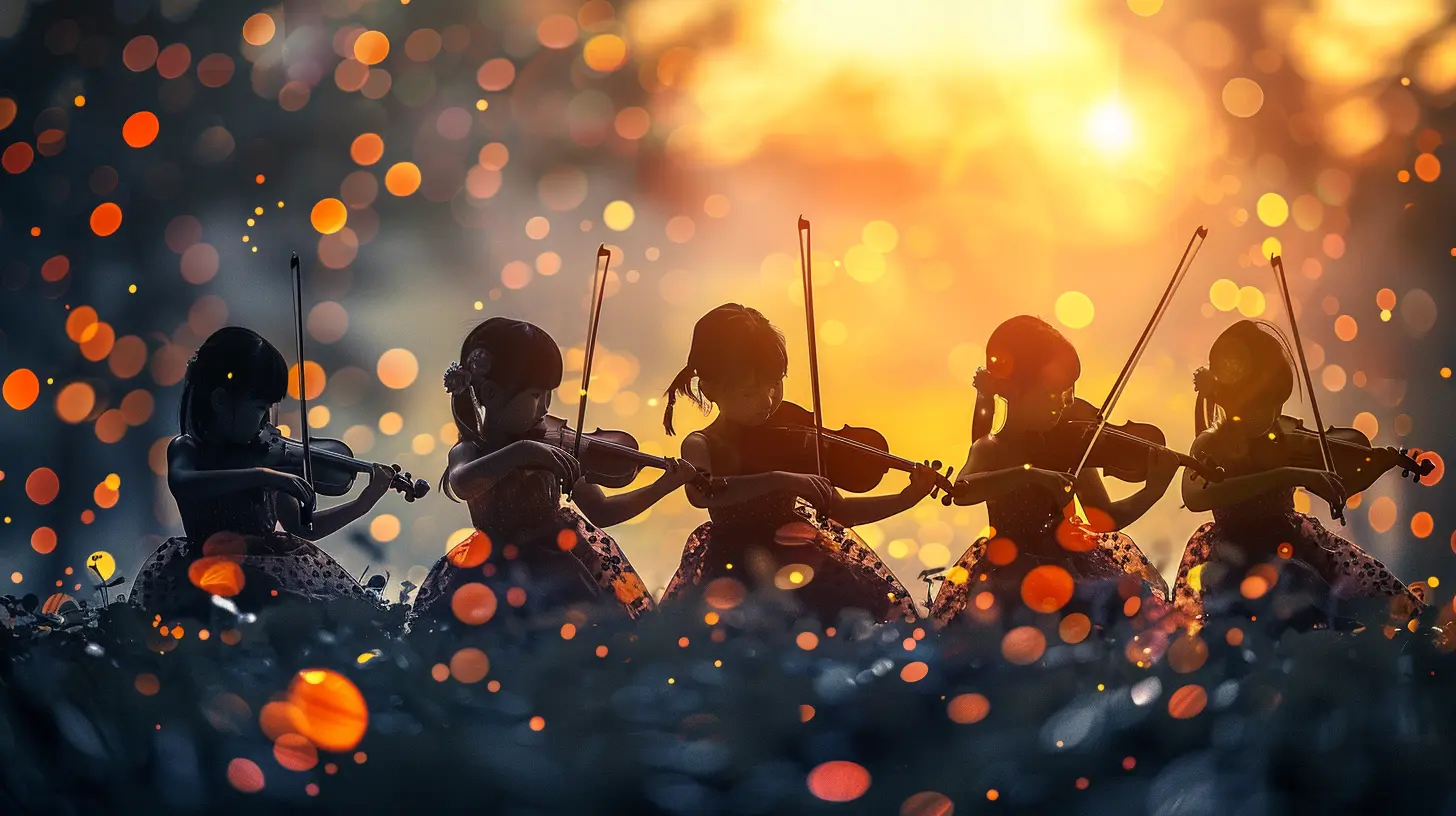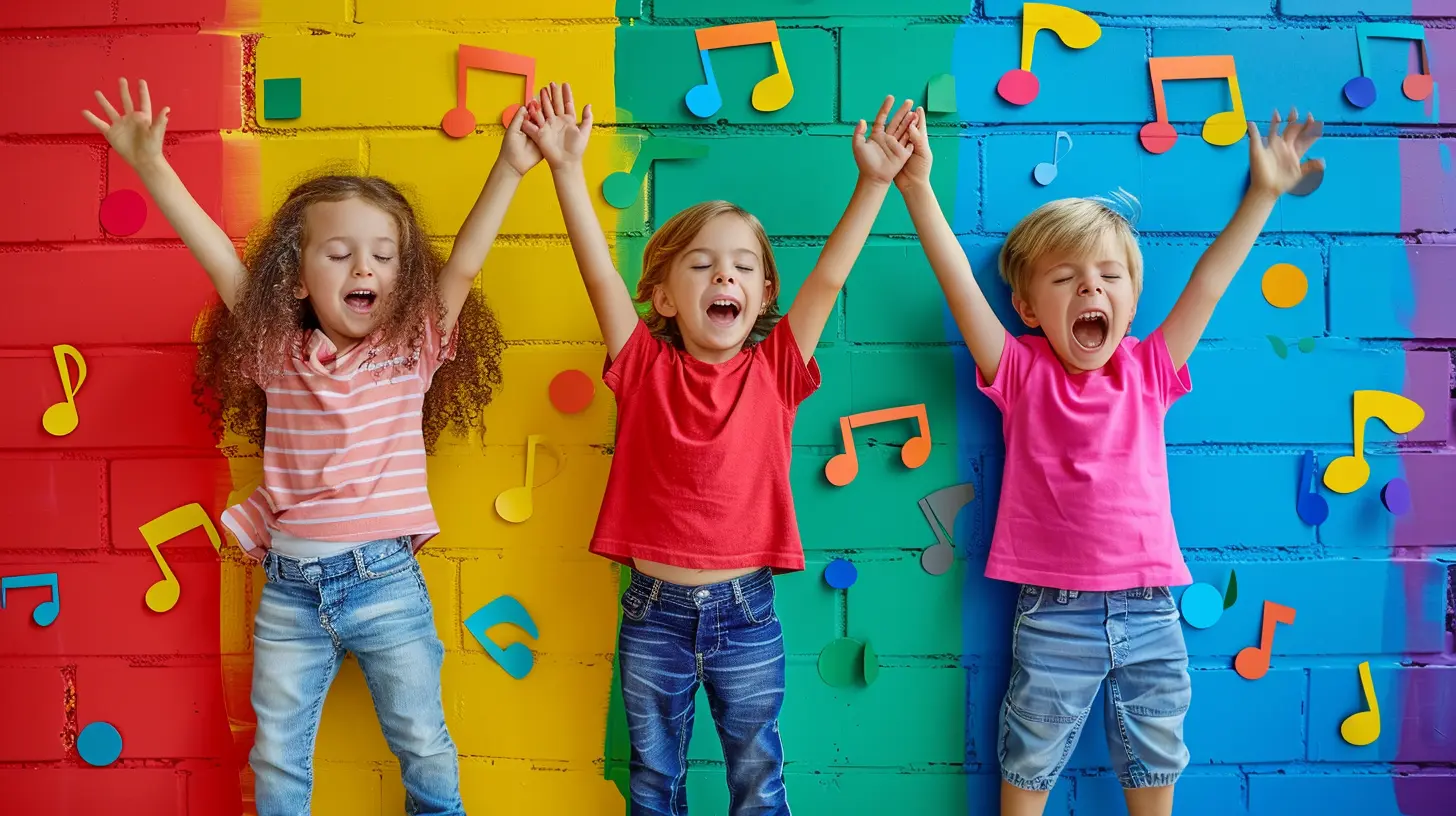How to Incorporate Music into STEAM Education
29 August 2025
Let’s be real — STEAM education is already pretty awesome. Science, Technology, Engineering, Arts, and Mathematics all bundled together to gear up young minds for a future filled with innovation and big ideas. But here’s the real question: Are we giving enough credit to the “A” in STEAM? More specifically, are we truly making the most of music in this mix?
If you think music is just background noise or a “nice-to-have” in the classroom, think again. Music isn’t just about melodies and beats — it’s a force of cognitive magic. It’s math in motion, science in sound waves, and creativity carved into time. It’s high time we start rocking the classroom with it.
So, if you're an educator, a parent, or just someone curious about what happens when Mozart meets coding and physics jams with jazz — buckle up! Let’s dive into how to incorporate music into STEAM education in a way that’ll get students engaged, thinking creatively, and, honestly, having a blast.
🎵 Why Music Belongs in STEAM
Before we roll up our sleeves and get into the “how,” let’s talk about the “why.” Why should we bother adding music into a space already filled with so much brainpower?1. Music Is Brain Fuel
Ever heard of the “Mozart effect”? While the science is still being debated, here’s what we do know: music fires up different parts of the brain. It helps with memory, attention, pattern recognition, and emotional processing. It literally wakes up the brain in ways textbooks can’t.2. It Builds Cross-Disciplinary Thinking
Music teaches rhythm, which is essentially math. It involves timing, counting beats, and fractions. Throw in acoustics and sound design, and boom — you’ve got physics and engineering in play. Try analyzing lyrics or composing a song — there’s your language and creativity booster.3. Emotional Engagement = Better Learning
Let’s face it, students remember lessons they connect with on an emotional level. Music has a unique way of sparking emotions and making learning memorable. A student might forget the quadratic formula, but they won’t forget the rap they made about it.
🎸 How to Incorporate Music into STEAM Education
So now that we’re all fired up, let’s break down practical, real-world ways to weave music into your STEAM curriculum without totally reinventing the wheel.🎶 1. Use Music for Teaching Math Concepts
Math has a bad reputation. But what if we could teach equations with beats?- Rhythm and Fractions: Rhythm is just a fancy way of dividing time. Whole notes, half notes, quarter notes — these are basic fraction concepts living in a musical world.
- Patterns and Sequences: Music is built on patterns. Whether it’s repeating melodies or chord progressions, students can analyze and create their own musical sequences to understand mathematical logic.
- Tempo and Ratios: Exploring tempo changes? You’re also diving into rates and ratios. Ask students to speed up or slow down a beat and measure the differences.
👂 Try This: Have students clap out rhythms and write them in fraction form. Or challenge them to compose a “math song” using musical patterns based on multiplication tables.
🎧 2. Explore Sound Waves in Science
Sound is not just heard, it's seen — well, kind of. Let’s connect physics to music.- Waveforms: Talk about frequency, amplitude, and wavelength. Show students how different notes produce different wave shapes.
- Instruments and Vibrations: Get hands-on. Use a guitar, a tuning fork, or even a rubber band to show how vibrations become sounds.
- Decibels and Measurement: Teach how scientists measure sound levels and why loudness can impact hearing and our environment.
⚗️ Pro Tip: Let students create their own instruments using basic materials (bottles, straws, rubber bands, etc.) and then analyze the pitches they produce. Science + engineering + music = STEAM gold.
🎹 3. Code with Beats – Music Meets Technology
If kids can code games, why not code music?- Music Programming Languages: Introduce tools like Sonic Pi or EarSketch. These platforms let students write code that creates music. It’s logic and loops with a side of melody.
- Digital Audio Workstations (DAWs): Use software like Soundtrap, BandLab, or GarageBand to teach technical skills in music production.
- Algorithmic Composition: Teach how algorithms can generate music based on rules or data inputs.
💡 Hack This: Have students create a loop-based track using code to reinforce concepts in logic, sequencing, and arrays. Add visuals too and watch the lightbulb moments happen.
🎼 4. Engineering with a Beat – Build and Design Instruments
STEAM is all about building things, and what’s cooler than building something that makes sounds?- Design a Musical Instrument: Use recycled materials to challenge students to create something that produces sound. Think water bottle maracas or PVC flutes.
- Explore Acoustics: Study how instrument shape, size, and material affect its sound.
- Apply Mechanical Engineering: Building a wind-up music box or a homemade xylophone? That’s mechanics and resonance coming to life.
🛠 Classroom Idea: Host a “DIY Instrument Fair” where students showcase their homemade instruments, explain how they work, and play them.
🎤 5. Fuse Art and Music Together
Let’s not forget that the “A” in STEAM stands for Arts, too. Music and visual art? That’s a match made in creative heaven.- Visualizing Music: Have students draw or paint while listening to music. Discuss how different genres evoke different emotional and visual responses.
- Soundtrack to a Story: Let students create background music for a story they wrote or animate a short film with music.
- Graphic Scores: Introduce non-traditional music notation. Let students design their own “scores” using drawing rather than notes.
🖼 Challenge: Ask your students to “draw a song” and then present their visual interpretation to the class — music appreciation meets visual storytelling.
🎤 6. Use Lyrics for Language and Logic
Lyrics aren’t just catchy — they’re packed with grammar, metaphor, and storytelling.- Lyric Analysis: Explore meaning, poetic devices, and cultural reflection in songs.
- Songwriting: Have students write lyrics about a scientific concept or a historical event.
- Rap Battles for Review: Use rap battles or music challenges to review vocabulary and key terms.
🎤 Fun Twist: Encourage students to write a rap about Newton’s laws or the water cycle. It sticks way better than a rote memorization sheet.
🧠 The Cognitive Benefits of Music in STEAM
We’ve talked about the hands-on, practical stuff, but there’s also a deeper reason to include music in STEAM — it boosts how students think.- Improved Memory: Music activates memory centers, helping with recall and understanding.
- Better Focus: Rhythmic activities can increase attention span and mental clarity.
- Emotional Intelligence: Music teaches empathy, social awareness, and emotional expression.
Want students who think deeply and solve creatively? Mix in music. It sharpens the brain and softens the stress.
💡 Real-Life Examples & Success Stories
Still not convinced? Let’s peek at what’s happening out there:- MIT’s Media Lab integrates music into technology projects to spark innovation.
- Steam Powered Music is a program that introduces coding through music composition.
- Young Composer Projects let kids use software to write their original music — boosting both tech skills and creativity.
These programs prove it: music isn’t fluff — it’s fuel.
🚀 Getting Started – No Music Degree Required
You don’t have to be Mozart or Missy Elliott to introduce music into your classroom. Start small.- Play instrumental music during work time.
- Use rhythm to explain math.
- Let students bring in music they love (with school-friendly lyrics, of course).
- Try free apps like Chrome Music Lab or Incredibox for interactive learning.
The point isn’t perfection — it’s participation. Let students explore, create, and connect.
⚡ Final Thoughts: Let Music Rock Your STEAM World
Let’s call it what it is — STEAM without music is kinda like a pizza without cheese. Sure, it’s still pizza, but it’s missing that magic. Music doesn’t just make things more fun; it makes learning stick, it builds bridges between subjects, and it wakes up parts of the brain that tests never reach.So go ahead — grab those headphones, dust off the classroom speakers, or even better, challenge your students to create their own symphony of science and sound.
It’s time to let your STEAM spirit sing.
all images in this post were generated using AI tools
Category:
Music EducationAuthor:

Eva Barker
Discussion
rate this article
1 comments
Anika Adams
Imagine a classroom where melodies unlock the mysteries of mathematics, and rhythms reveal the secrets of science. Dive into the enchanting world of STEAM education, where music transforms learning into an unforgettable adventure.
September 16, 2025 at 11:28 AM

Eva Barker
Absolutely! Music enhances engagement and retention in STEAM education, making complex concepts more accessible and enjoyable. Let's explore innovative ways to integrate melodies and rhythms into our curriculum!


